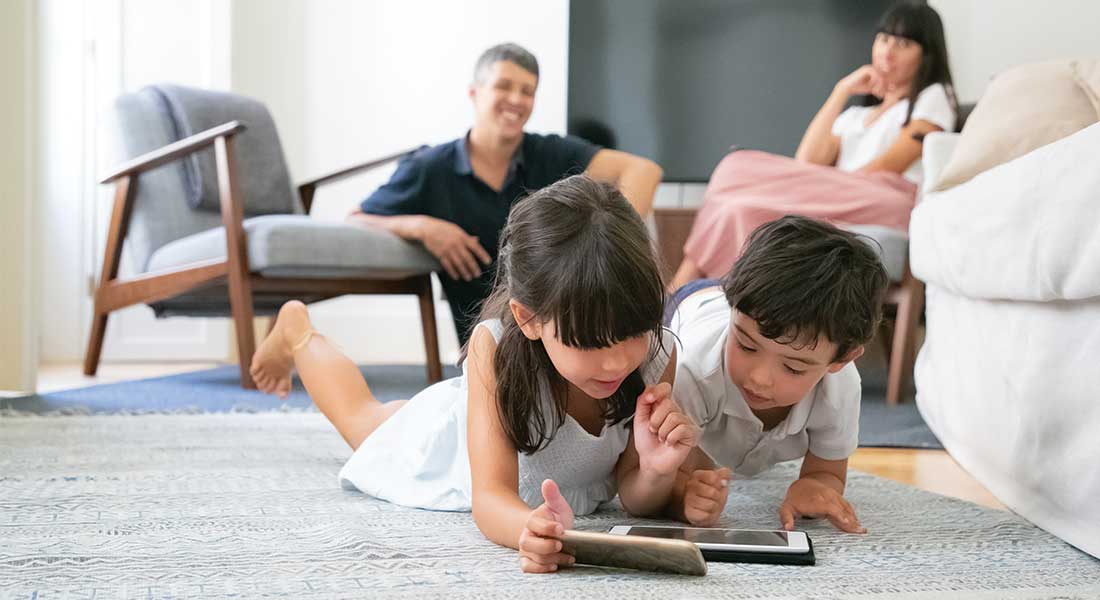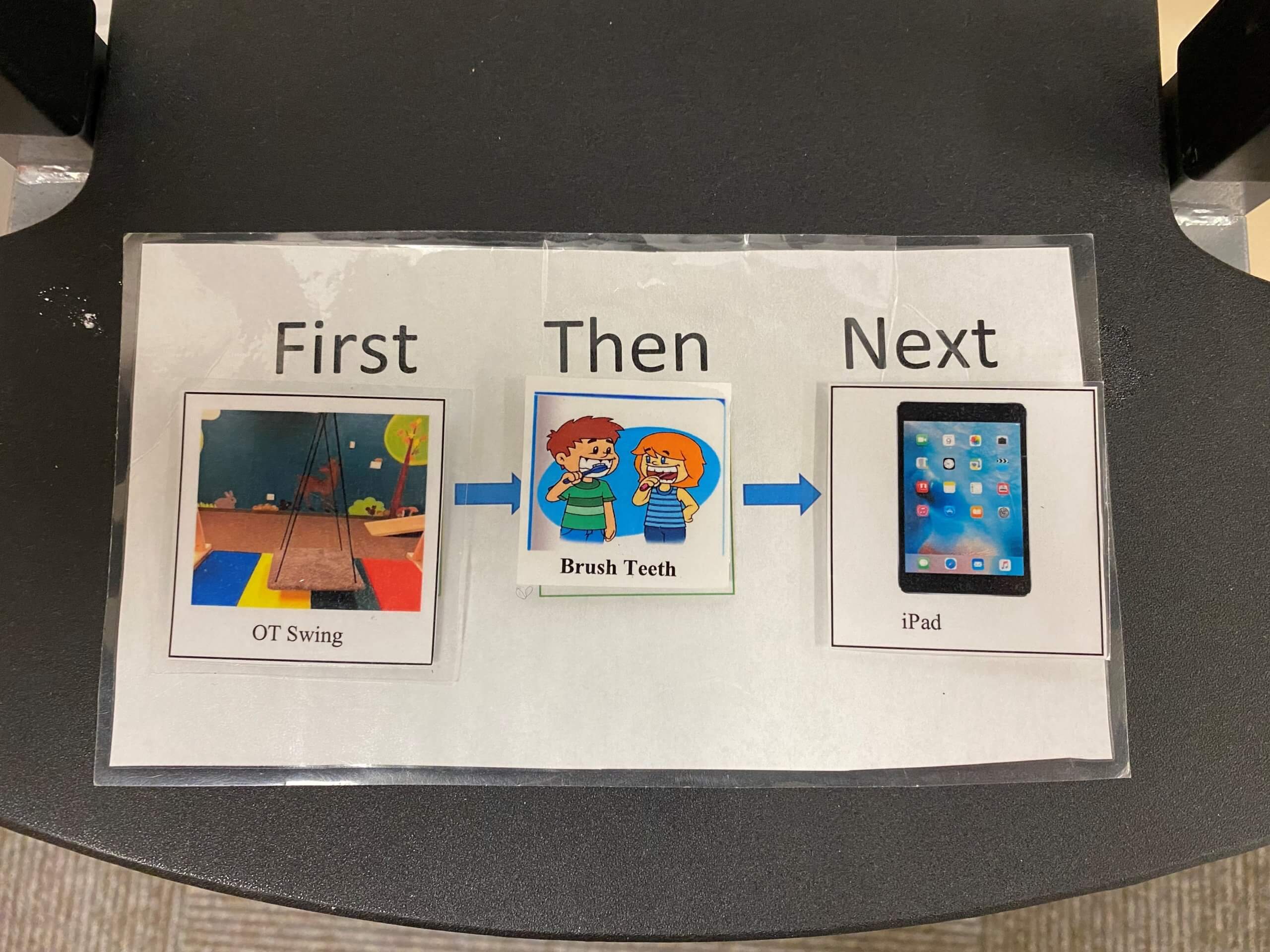How Much Screen Time is Too Much for Children with Autism?
January 27, 2025
January 27, 2025

Tablets, smart phones, smart watches, TVs and computers – screens follow us everywhere. It’s easy to let these devices consume our time. Caregivers often rely on screen time for their children as they cook dinner, clean the house, or work from home.

However, some families worry about their child’s digital media use. Research suggests that 1-year-old infants with one to four hours of daily screen time were more likely to experience developmental delays by ages 2 and 4 years.** These delays often affected problem-solving and communication skills.
How much is too much? And how can caregivers work with their children to cut back on screen time when saying “no” to it becomes a struggle?
To help caregivers with screen time, we talked to Ashley Marshall, the Speech Language Pathology Clinical Specialist at Hopebridge. We also consulted our team of Board Certified Behavior Analysts (BCBA). They shared advice on how to manage screen time in an effective, compassionate manner that benefits children and families. They also considered those with autism spectrum disorder (ASD) or other developmental delays.
The American Academy of Pediatrics (AAP) offers specific recommendations for screen time. According to the AAP, infants and toddlers younger than 18 months old should not have exposure to screens, except for video chatting. While it’s not perfect, the AAP considers having human interaction on the other side of the screen acceptable. As children grow into the key developmental years of ages 2 and 5, the AAP recommends no more than one hour of screen time each weekday.
If your children are not meeting these recommendations, you are not alone. Managing screen time can be tough. As a caregiver, it is important to understand why these guidelines exist. This knowledge helps you make informed decisions for your family.
Research suggests that too much screen time can contribute to developmental delays and changes in brain composition. Some studies show that digital media usage can affect gray matter volume Gray matter is the brain tissue we need for daily tasks. It also affects neural pathways, which help our brains send signals to process information. Additionally, white matter of the brain is impacted – white matter is responsible for connecting the gray matter together and sending signals across the brain. With increased screen time, white matter is more disorganized, which makes sending signals through the brain more difficult.
“We’re also seeing an increase in behavior dysregulation as a result of too much or certain types of screen time. The music, bright colors and repetitive images create a constant feel-good chemical that can be addictive. When this visual input is gone, children may not know how to regulate themselves,” said Ashley.
Children, especially those with autism or speech disorders, may show new or increased high-intensity behaviors as a sign of “too much” screen time. Reactions can vary each child. Some warning signs include crying and tantrums when they are not given access to a screen.
Children may obsess over their devices; choosing not to engage in any other activities or play with any other toys besides interacting with a screen. They may “have to have it now” and constantly ask for it. Others may feel the need to touch a phone or tablet every few seconds so it doesn’t “go dark,” or have a desire to view someone else’s phone. Some may elope to an area where they last saw the device, which can lead to safety hazards.
These instances typically occur with tablets and smart phones, though television or computer usage can pose similar challenges.
“It’s common for parents to ask, ‘Is the damage already done?’ Yes, it can turn into an addiction that is the only thing that pacifies them, but their young brains are “plastic” and can be re-molded! You can help them work through it with involvement in more functional, interactive and play-based tasks,” said Ashley.
The best way to regulate screen time is to take a proactive stance, though we understand that is not always an option. At Hopebridge, this means engaging our children in a more active manner. We play games of tag and participate in various circle time activities to provide fun alternatives to the tablet.
Here are eight tips, tools and tactics caregivers can utilize to help make the process smoother:


Watching TV or the tablet with your child will also help you notice if there are any concerns, such as a limited response, lack of understanding or limited speech overall. If you think your child may not be engaging in the content in a way that is typical for their age (check our developmental milestones here), you can then choose to discuss it with their physician and possibly seek a speech evaluation or autism testing.
Participating in applied behavior analysis (ABA therapy) is an effective way to combat the screen-time challenge for kids with autism. Here are some steps to reduce screen time with ABA principles:

We want to emphasize that some screen time is acceptable and does not have to be cut out completely, but it should not be limitless nor take away from other more important activities and skills.
Do you want more assistance on this goal and others? Our therapy team at Hopebridge has experience in this area and beyond to help your child get the most out of what life has to offer. If your family is struggling with screen time and your child experiences other behaviors that may need support, fill out the form on our website to find out more about our autism testing, ABA therapy and other outpatient service options like speech therapy and occupational therapy.
** Takahashi I, Obara T, Ishikuro M, et al. Screen Time at Age 1 Year and Communication and Problem-Solving Developmental Delay at 2 and 4 Years. JAMA Pediatr. Published online August 21, 2023. doi:10.1001/jamapediatrics.2023.3057
*Informed consent was obtained from the participants in this article. This information should not be captured and reused without express permission from Hopebridge, LLC.